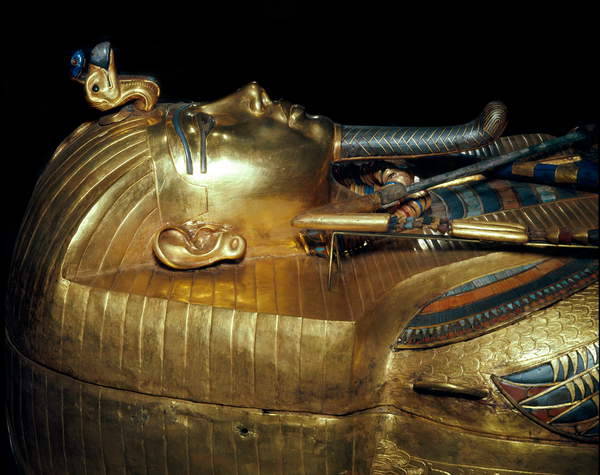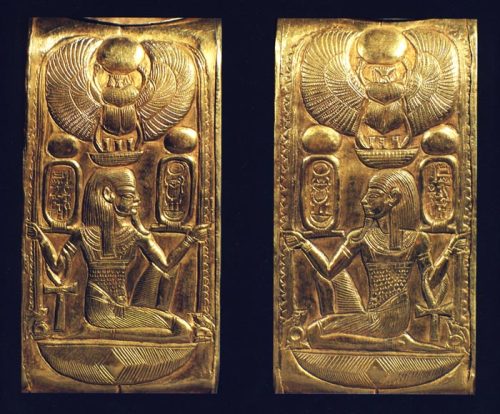
Egypt came first, then history and civilization came. Egypt has one of the world's seven wonders of the pyramids. The Virgin Mary came to protect herself and her son. Egypt is the safest destination for tourism. My goal is to help foreigners learn my country’s history, come to Egypt, whatever your budget, and I will be your guide at no additional cost to you. booking with us. The goal is to service booking tours to Egypt. the best Nile cruise in Egypt. https://kingofegypttours.com
Wednesday, 27 May 2020
Funerary Mask of Tjuyu.
Funerary Mask of Tjuyu, from the Tomb of Yuya and Tjuyu (KV46). She is the grandmother of Akhenaten and great grandmother of Tutankhamun. The New Kingdom, 18th Dynasty, ca. 1550-1292 BC. Valley of the Kings, West Thebes. Now in the Egyptian Museum, Cairo.

The baboon is smart and fast.
"The ancient Egyptians used to use in the police force auxiliary animals, as we did now, but the Egyptians did not have a police dog because they did not have a police baboon."
"The baboon is smart and fast, and his memory is strong. However, he was very fierce, so that the Egyptians used to seek help in capturing criminals."

The royal descendant of the cobra snake.
"The royal descendant of the cobra snake, which belongs to King Senusert the Second, the middle state, the twelfth dynasty, today is four thousand years, which is of pure gold and inlaid with precious stones and was fixed to the crown of the king"


The Innermost Coffin of Tutankhamun.
 This coffin of solid gold is covered with incised decorations and inscriptions inside and outside, with the names and epitaph of the deceased king and protective texts It is inlaid with semiprecious stones and coloured glass.
This coffin of solid gold is covered with incised decorations and inscriptions inside and outside, with the names and epitaph of the deceased king and protective texts It is inlaid with semiprecious stones and coloured glass.The coffin’s shape is that of Osiris holding the sacred insignia, the heka sceptre and the flail. The vulture and rearing cobra, protect his forehead. The divine beard is made of gold inlaid with blue glass. Deities of Upper and Lower Egypt protect the body of the coffin with their wings. The coffin weighs 110.4 kilograms or 243.4 pounds.






The Woman and the Golden Flies.
In Ancient Egypt golden flies, we were given as awards for valour in battle. You could think of them as a medal of honour or a medal of valour in the American military. They were not only given for valour but also persistence against the Hyksos in battle. The horsefly was used because it harassed beasts, a fitting distinction for warriors who drove out invaders.

HOURS KING OF THE SKY.


Horus was often the ancient Egyptians' national tutelary deity. He was usually depicted as a falcon-headed man wearing the pschent, or a red and white crown, as a symbol of kingship over the entire kingdom of Egypt. ... He was worshipped from at least the late prehistoric Egypt until the Ptolemaic Kingdom and Roman Egypt.


























Subscribe to:
Comments (Atom)
GOOD MORNING FROM EGYPT EGYPT READY NOW مصر مستنياك
GOOD MORNING FROM EGYPT EGYPT READY NOW مصر مستنياك http://kingofegypttours.com/ Egipto te espera http://kingofegypttours.com/ Egypt is wa...

-
Cairo is fan-shaped, narrowest in the south, where the river valley is wedged between desert escarpments, and widest in the north, where t...
-
Abu Simbel, the site of the two temples built by the Egyptian king Ramses II (reigned 1279-13 BC), which is now located in Aswan Govern...
-
GOOD MORNING FROM EGYPT EGYPT READY NOW مصر مستنياك http://kingofegypttours.com/ Egipto te espera http://kingofegypttours.com/ Egypt is wa...




![A carving of a Nubian captive adorns the handle of a walking stick recovered from the tomb of King Tut. The CT scans showed that he had a partially clubbed foot and would have been unable to stand unaided [900x1200]](https://i.pinimg.com/236x/48/a2/bf/48a2bf89c3bab6e6486d845aa33d7ffb.jpg)









